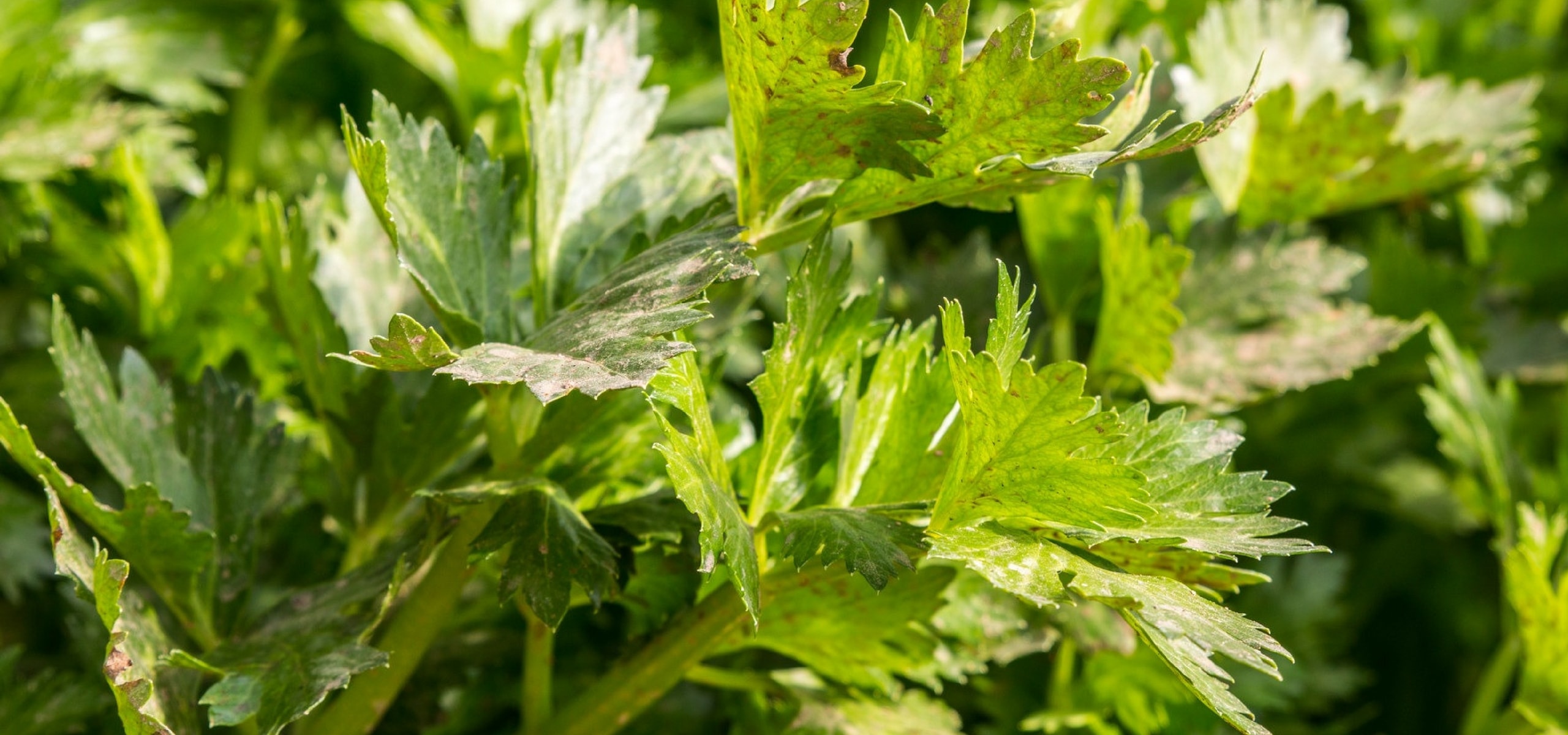
Celeriac, celery branch: sow, plant, grow, harvest
Contents
Celery in a nutshell
- Three types of celery are grown: celeriac, from which the fleshy root is eaten, stalk celery or celery with midribs, eaten for its long fleshy petiole, and leaf celery, from which the leaves and small midribs are eaten.
- Celery is a plant native to marshes; it prefers fresh, moist, deep, light soil rich in organic matter.
- Sowing is fairly tricky as it requires warmth and humidity, so it is best started in a warm spot indoors. Pricking out is beneficial before planting out into the wide world of the vegetable garden!
- It is a fairly long crop: expect 6 to 7 months between sowing and harvest. You can save 2 to 3 months by buying young plants.
- In the garden, it grows in sun or partial shade. The secret to success? Frequent, plentiful watering.
Word from our expert
Celery has been grown as a vegetable since Antiquity, when it was consumed as an herb and for medicinal use. First cultivated form was cutting celery and, over centuries, celeriac and stalk celery were selected.
Celeriac is appreciated by gardeners for its ease of cultivation; it is a hardy root vegetable with a long growing season. I recommend the Monarch variety, an improvement on the Géant de Prague variety, which produces attractive, flavoursome roots and resists bolting well — ideal for beginner gardeners!
Stalk celery is a leaf vegetable, less hardy than celeriac, but also valued for its robustness in the garden. I recommend the Géant Doré Amélioré variety, useful in the kitchen because its midribs are not stringy. But, if choosing, don’t miss the Giant Red variety, with red petioles, much more flavoursome than the green ones! Cutting celery should be grown for making bouquet garni or for flavouring dishes.
For cultivation, plan ahead and start sowing from March indoors in a warm, bright spot. Germination is fairly slow and the young plant grows slowly, very slowly at first! Once young plants are sufficiently developed, keep the best and prick them out into individual buckets. They can then be planted in the garden from May onwards, or earlier with frost protection. Celery requires a generous supply of well-rotted compost or well-decomposed manure (5 kg per m²). After planting, ensure they do not lack water — water frequently.
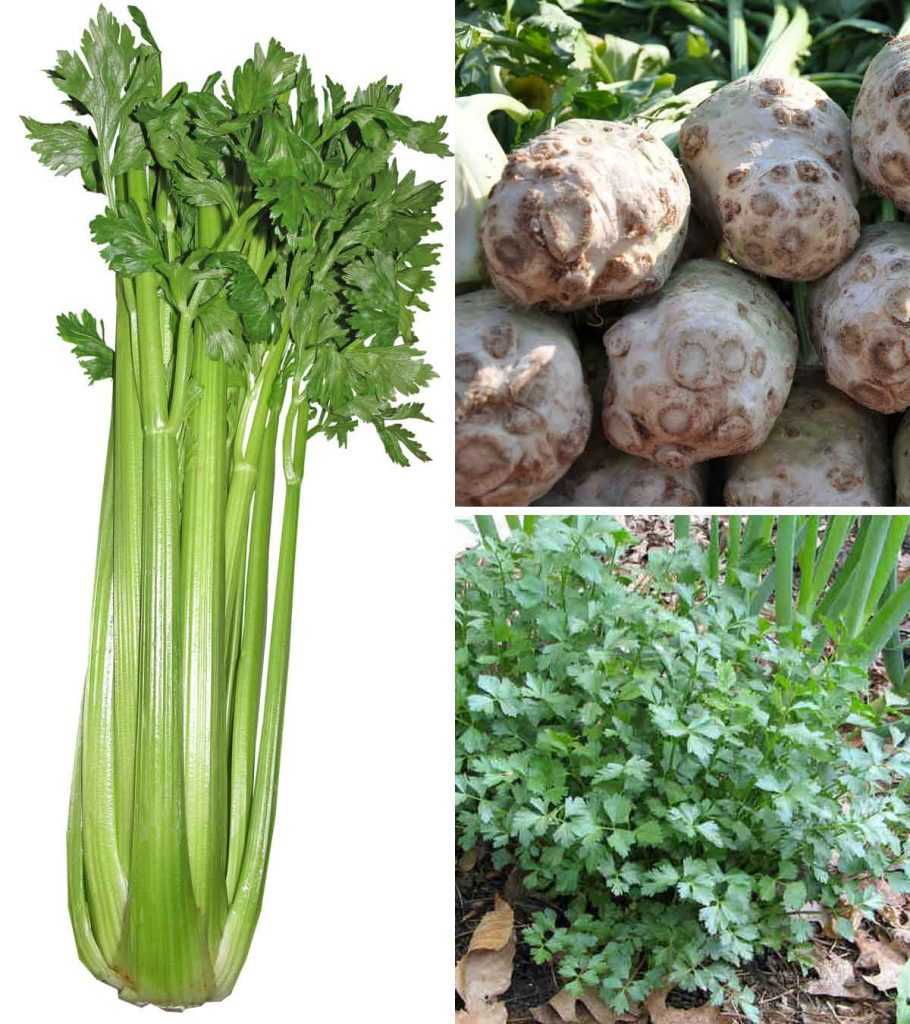
3 cultivated species: Stalk celery – Celeriac – Cutting celery
Description and botany
Botanical data
- Latin name Apium graveolens
- Family Apiaceae
- Common name Celery stalk, celeriac
- Flowering biennial
- Height 7-8 years
- Exposure sun or partial shade
- Soil type fresh, loose, rich in humus, non-acidic
- Hardiness hardy
Celery is a descendant of marsh parsley (or wild celery), a plant native to the Mediterranean that grows in wet places. Wild celery has a bitter taste and was considered a medicinal plant rather than a vegetable until celery selections were made in the 16th century.
Celery has symbolic importance in history: in 628 BC Greeks founded the celery capital, Selinunt (Selinunte) in Sicily. Their coin (drachma) bore an image of the celery leaf. In the Middle Ages, celery appears in herbals of simples, then used as a medicinal plant. The first cultivated form of celery is thought to be cutting celery. Stalk celery was selected in Italy in the 16th century. In France, celery is first cited as a vegetable in 1562. Celeriac is mentioned in the 18th century in the Garden Kalendar of the Reverend Gilbert White.
Etymologically, “céleri” comes from “seleri”, an Italian dialect word derived from Latin selinon and referring to the plant; it also means “plant of the moon”.
Celery belongs to family Apiaceae (formerly Umbelliferae), like the carrot, the parsnip, the fennel, and many aromatic plants such as dill, coriander, parsley, etc. It is a biennial in temperate conditions, but can be perennial in some tropical conditions, in which case it does not flower. Indeed, celery must undergo vernalisation (a cold period) between the first and second year to flower.
In the garden, three species are cultivated :
- stalk celery or celery with ribs, Apium graveolens var. dulce
- celeriac, Apium graveolens var. rapaceum
- cutting celery, Apium graveolens var. secalinum
Celery can reach up to 1.20 m in height at flowering in the second year. Celery root is always slightly tuberised; celeriac has been selected for this trait and its root can weigh up to 1 kg. Leaves are glossy dark green, borne on long petioles shaped like a gutter and very fleshy in the case of stalk celery.
In the second year, celery produces a flowering stem in summer bearing an inflorescence that is an umbel composed of many small white flowers, opening from the periphery towards the centre of the umbel. Each flower is hermaphrodite, bearing both male organs (stamens, pollen) and female organs (pistil, ovary). A flower thus has 5 stamens and 2 styles, which lead to two chambers composing the ovary. One chamber contains one ovule, so each flower can produce two seeds. This seed is an achene, grouped in pairs (diachene), which separate at maturity.
Pollination is mainly carried out by insects. They are attracted by the strong fragrance emitted by the flowers and their plentiful nectar, so celery is an entomophilous plant. It is also allogamous and promotes cross fertilization. We have seen that the umbel ripens from the outside inwards, but the flower itself is protandrous, meaning stamens mature before the pistil. It takes 8 days between pollen release and stigma maturity ready to receive pollen from another flower.
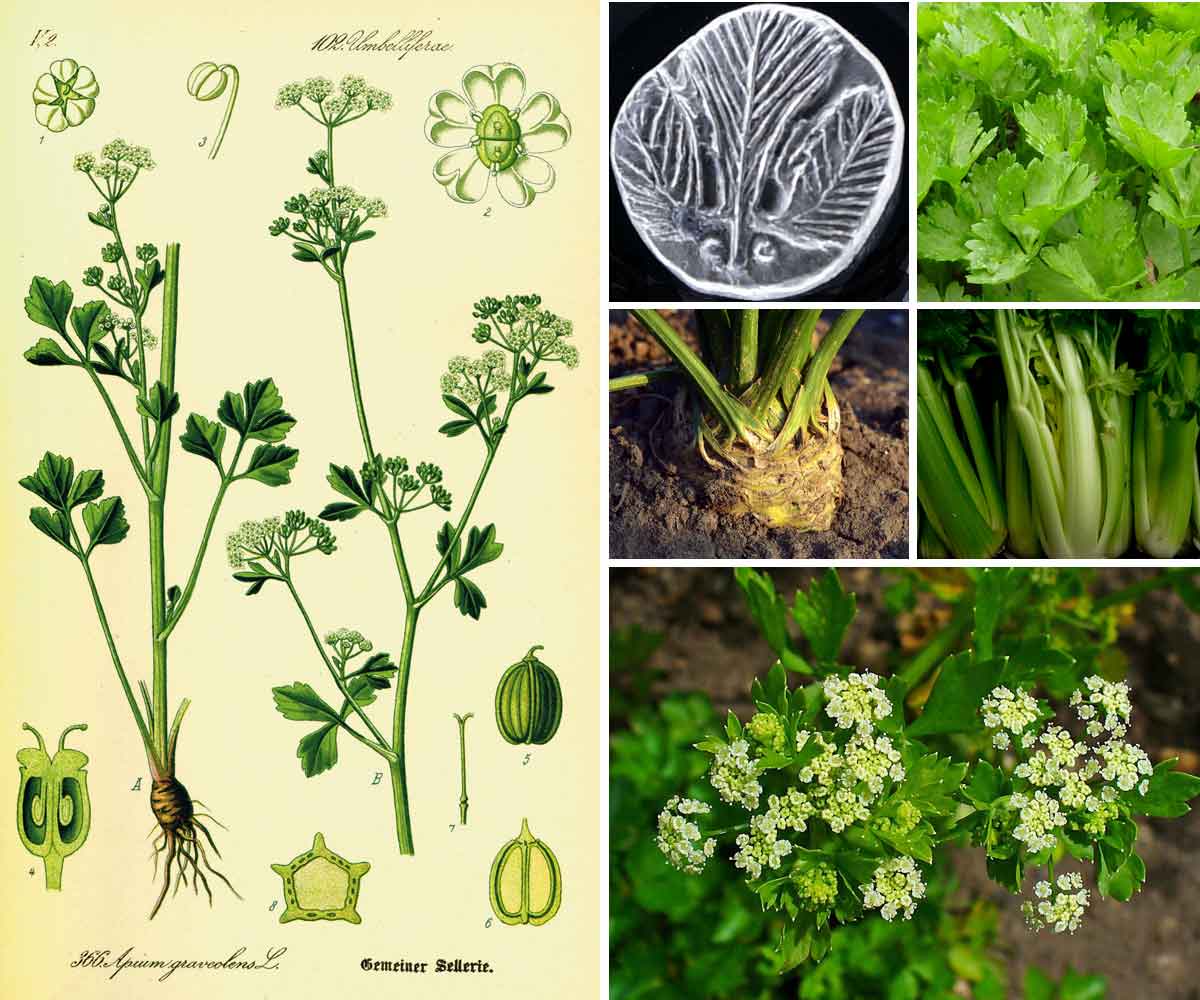
Botanical plate of celery – Greek drachma showing celery – Leaf – Celeriac – Rib or petiole – Inflorescence
Read also
Thinning of sowingsCelery varieties
Find our selection of stalk or branch celery, cutting celery and celeriac.
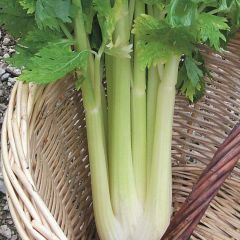
Celery Géant Doré Amélioré
- Flowering time August to October
- Height at maturity 70 cm
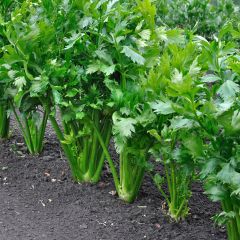
D'Elne Celery - Apium graveolens
- Flowering time August to October
- Height at maturity 50 cm
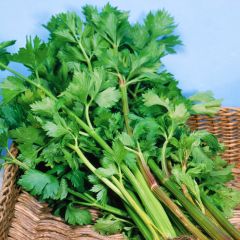
Martine Celery - Apium graveolens
- Flowering time August to October
- Height at maturity 50 cm

Full Giant Red Celery - Apium graveolens
- Flowering time August to October
- Height at maturity 50 cm
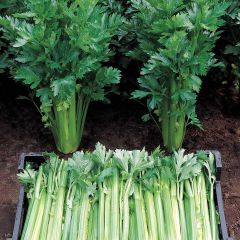
Celery Tall Utah - Ferme de Sainte Marthe Seeds
- Flowering time August to October
- Height at maturity 50 cm
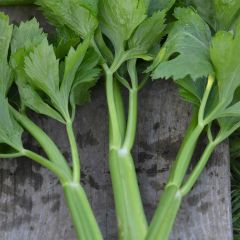
Leaf Celery - Ferme de Sainte Marthe Seeds
- Flowering time August to October
- Height at maturity 30 cm

Westlandse dark green cutting Celery - Apium graveolens
- Flowering time August to October
- Height at maturity 30 cm
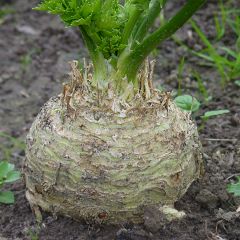
Prague Giant Celeriac - Apium graveolens
- Flowering time August to October
- Height at maturity 50 cm
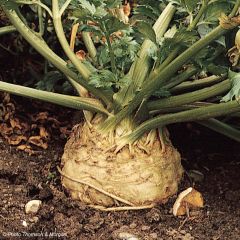
Celeriac Monarch
- Flowering time August to October
- Height at maturity 50 cm
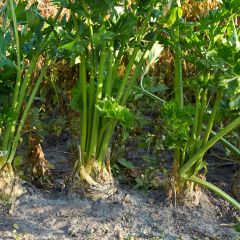
Celeriac Ibis - Vilmorin Seeds
- Flowering time August
- Height at maturity 60 cm
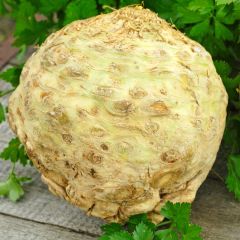
Celeriac Goliath
- Flowering time August to October
- Height at maturity 50 cm
Discover other Celery seeds
View all →Available in 1 sizes
Available in 1 sizes
Available in 1 sizes
Available in 1 sizes
Available in 1 sizes
Available in 1 sizes
Available in 1 sizes
Available in 1 sizes
Available in 1 sizes
Available in 1 sizes
Sowing and pricking out celery
When to sow celery?
Sowing celery is a somewhat delicate task: germination is slow and requires warmth and humidity. Sow in March–April, in warmth at home or under a heated shelter, or from mid-April to late May in an in-ground nursery, possibly under a cold frame.
How to sow celery?
Sowing celeriac and celery is done like this in a seed tray (or seedling flat):
- Fill a seed tray three-quarters full with seed compost, firm down with a tamper.
- Sow celery seed thinly.
- Cover with very little sieved seed compost then firm down using a small tamper.
- Sprinkle with a little powdered charcoal or cinnamon (to prevent risk of damping-off)
- Spray surface with a fine mist of water then maintain constant moisture (but not excessive) until germination.
Soil or compost must be kept moist at all times; you can cover the sowings until emergence with several layers of wet newspaper. Growth is very slow at the start. Temperature must be above 15°C. Germination occurs on average in 12 to 15 days.
Pricking out celery
The aim of this pricking out is to obtain strong, stocky young plants before final planting in the vegetable patch. I recommend waiting until the four true leaf stage, around late April for first March sowings. Prick out into small buckets at a rate of one young plant per bucket.
- Fill your buckets with potting compost and make a hole in each using a dibber (or, if unavailable, a pencil).
- Lift the best celery young plants using a dibber or a small spoon.
- “Dress” the young plants by trimming a few centimetres off the roots
- Place the roots into the hole, ensuring they are not turned back on themselves
- Firm with fingers to bring compost back over the roots
- Water gently
Keep young plants protected from frost (indoors, conservatory, cold frame, under cloches) but put them outside during the day to harden off gradually.

Photos of pricking out celery (A. Gourmelen). Wait until young plants are sufficiently developed before starting individual pricking out into buckets.
Read also
Sowing vegetable seedsPlanting celery
From mid-May to late June, once all risk of frost has passed, young plants are planted out in the vegetable plot in their final positions. They are planted in warmed soil that has been well prepared: weeded, loosened then levelled. Unlike other vegetables, the collar of celery must not be buried.
Planting distances to observe are 35 cm in all directions (between the ranks and between each young plant on the rank).
Cultivation, care and companion planting
Celery prefers fresh to even moist, deep and light soils. It requires well-manured soil, previously enriched with a supply of mature compost or manure at a rate of 3 to 4 kg per m2. It also needs potash, for example in the form of wood ash. It grows in sun or partial shade.
Routine maintenance of celery consists of regular weeding and hoeing. It requires frequent, generous watering: soil must remain moist, any water stress potentially triggering bolting. These tasks can be spaced out or greatly reduced if you mulch the soil with thin successive layers of previously dried grass clippings.
During cultivation of celeriac, it is recommended to remove aerial rootlets once the bulb has formed. The midribs of stalk celery sometimes benefit from being blanched before harvest: to do this, 15 days to 3 weeks before harvest, deprive the midribs of light by wrapping them in cardboard fixed with string.
In companion planting, celery pairs favourably with leek, chard, squashes and fennel. Avoid planting near parsnips, carrots and maize. Biodynamic practitioner Volkmar Lust advises pairing it with cauliflower; the latter would protect celery from septoria and the celery fly, while celery would in turn repel the cabbage white butterfly.

Diseases and pests
Celery is relatively resistant to diseases and pests.
The main disease is septoria: attacks by this fungus cause brown spots to appear on leaves that eventually yellow and dry out. As a preventive measure, spray a Bordeaux mixture solution, or, more environmentally and soil-friendly, a horsetail decoction.
The most common pest is the carrot fly, Psila rosae. This parasitic insect, present in gardens from April to early November, affects growth of attacked plants. To deter it, lay a mulch made from debris of repellent plants (lavender, tansy).
Also note attacks by the celery fly, Philophylla heraclei. This fly appears in May and lays its eggs on celery leaves; they can descend into the petiole. The larvae create collective mines that produce large white patches on the leaves; these are shiny through translucence, then take on a dried, scorched appearance. Damage is proportional to degree of fly attack, but it reduces yield. Remove affected leaves and, as with the carrot fly, apply a mulch made from debris of repellent plants.
→Find out more in Diseases and pests of celery: identification and solutions.
Harvesting and storing
Cultivation of celery takes 6 to 7 months between sowing and harvest, which starts in August and continues until December.
Midrib celery is harvested whole or by cutting branches as required.
Cutting celery is preferably harvested leaf by leaf.
Celeriacs are pulled up using a fork and spade. Optionally leave the bulbs to dry for a whole day on dry soil, then cut the foliage at collar level and trim rootlets before storing in cellar or silo.
Leaves of stalk celery and cutting celery are best consumed fresh to fully enjoy their aroma. However, they can be dried and used as an aromatic plant or frozen. Celeriacs should be stored in a cool, humid place away from light and will then keep for several months.
Uses and nutritional value
Celery leaves are used as a condiment in soups, stews and to flavour certain sauces and stuffings; they complete bouquet garni. Raw midribs, tender, finely sliced, can be part of mixed salads or cut into sections and eaten raw for a crunchy bite. It also blends well into smoothies with some carrots and tomatoes.
Celeriac is, of course, eaten raw in remoulade with mustard mayonnaise, also in salads. Cooked, it is prepared with tomato sauce, sautéed, au gratin, mashed, in fritters or in soups. As for spices, it pairs well with nutmeg and cinnamon.
Celeries have many virtues: antirheumatic, appetising, digestive and remineralising. Celery-branch, raw or cooked, is a good source of vitamin B9 and vitamin C, as well as potassium and calcium. It also contains copper and manganese. Celeriac, for its part, is rich in vitamin B9, three times as much as celery-branch. It is a good source of vitamin B6. In terms of minerals and trace elements, it is a source of selenium and potassium. Only one small drawback: both celeries contain a non-negligible amount of sodium (less than in cured meats, rest assured), but this should be taken into account in cases of hypertension and other salt-related health issues.
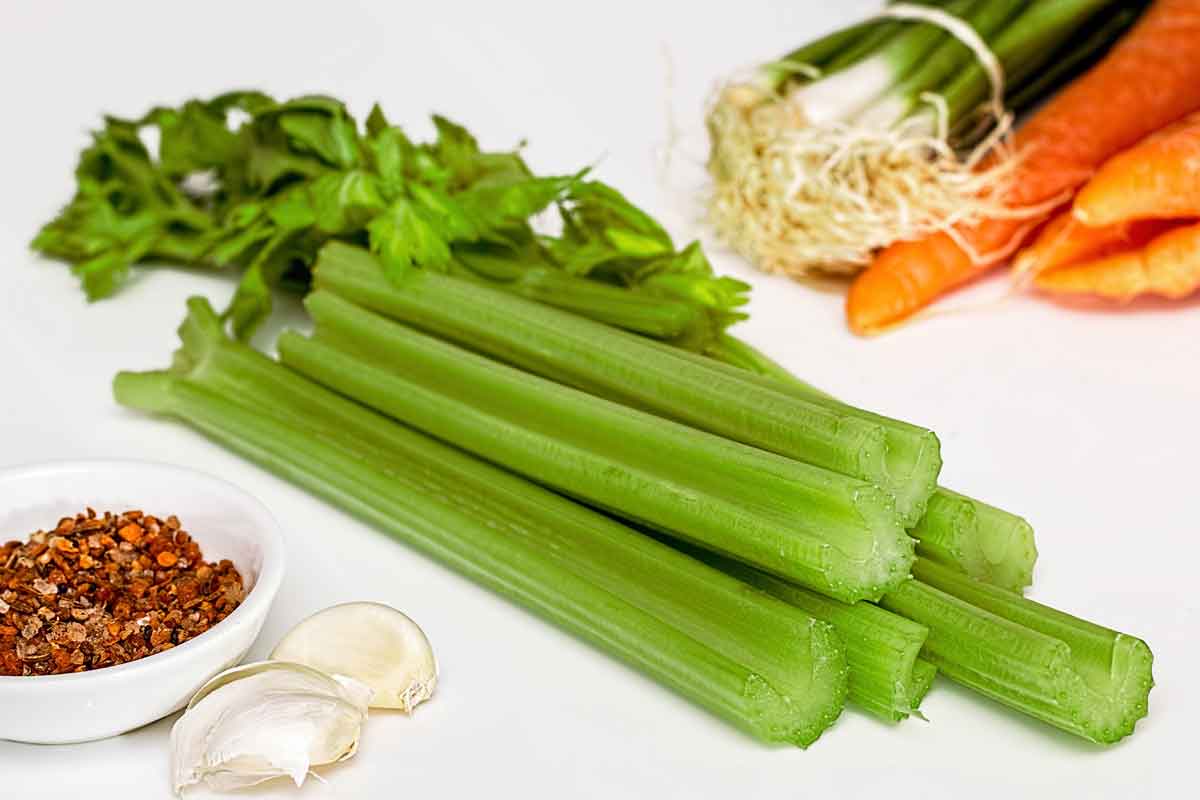
Useful resources
- Discover in our online shop our range of seeds and of young plants of celery.
- Celery: how to choose the best variety?
- Our tutorial: How to sow celery?
Frequently asked questions
-
Should branch celery be peeled?
Like rhubarb, celery branch contains strings and can become stringy. No need for a peeler or knife: break the celery midrib at its base, then pull the cut section up towards the petiole — the strings will cling to it and come away by themselves.
-
Is celery sensitive to frost?
Celery being a biennial plant, it is quite hardy down to -12°C. However, branch celery is much more sensitive to frost than celeriac; midribs are quickly damaged. That is why it is advisable to protect branch celery from the first autumn frosts.
-
Are celeriac leaves edible?
Yes, celeriac leaves (including the petiole) are perfectly edible; they can, for example, be used to make a bouquet garni.
- Subscribe!
- Contents
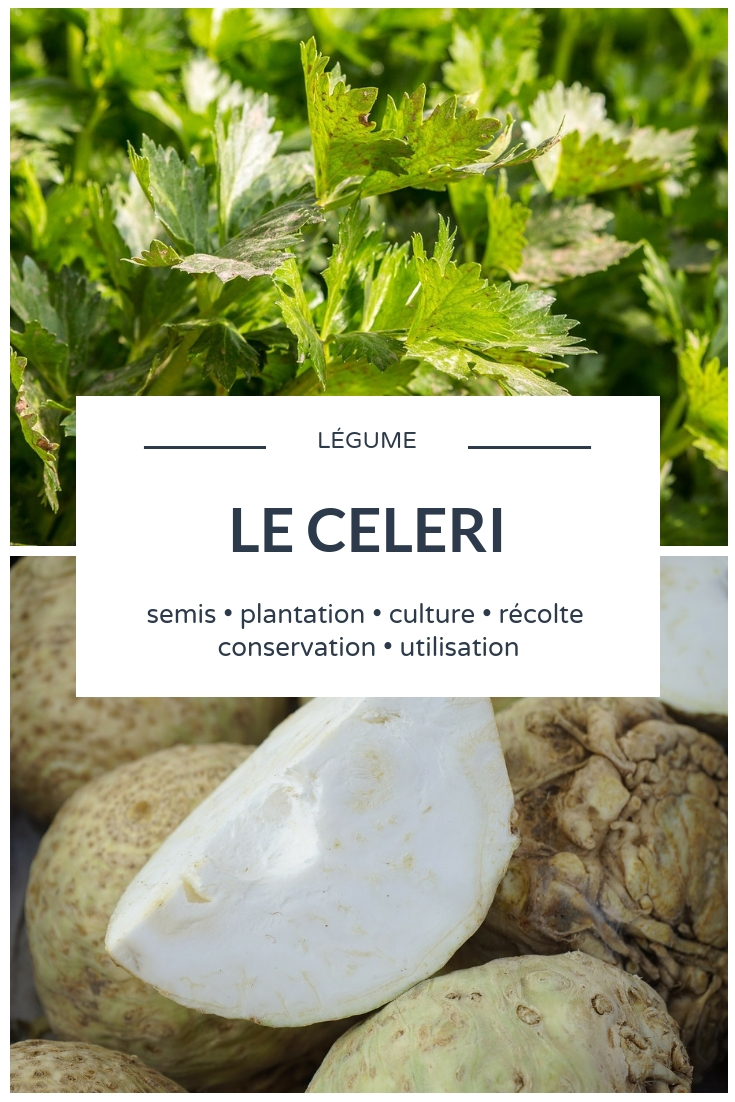































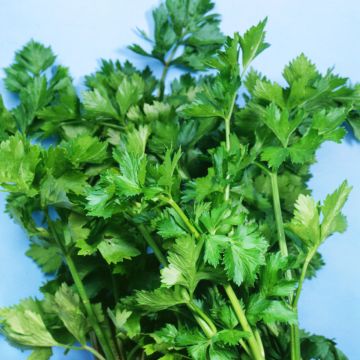
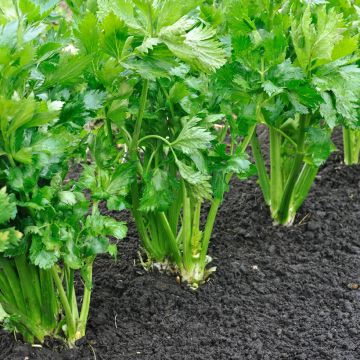
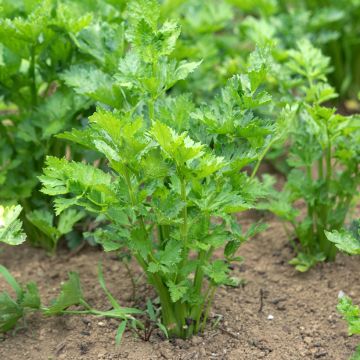



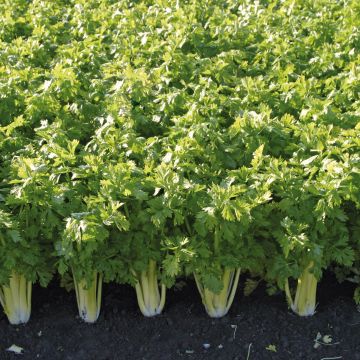

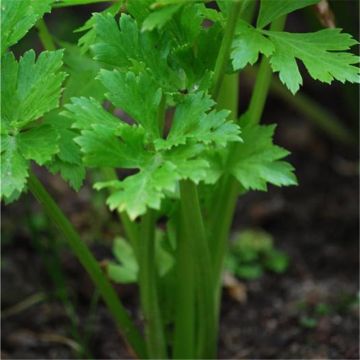

Comments